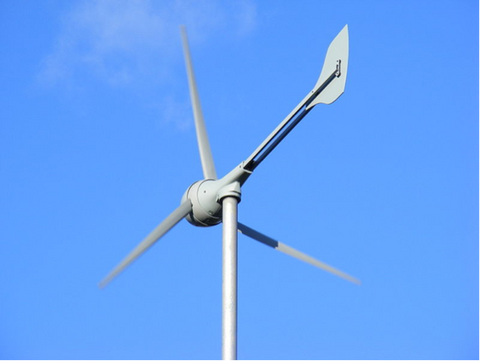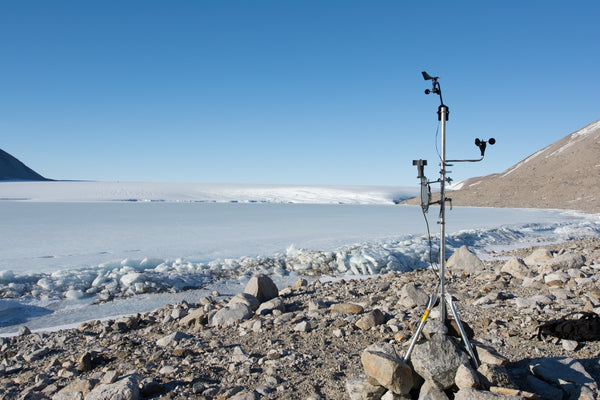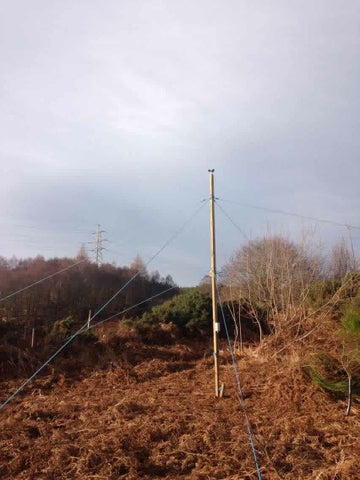Wind sensors have a critical role in the wind energy industry.
The same principle can be applied for safety purposes in the construction industry. Historic wind data can be analysed to schedule lifts and other weather-sensitive tasks more efficiently.
Live measurements can be used for short-term decisions, complementing historic data. Wind data is not associated with a revenue stream, but it can help construction firms avoid major costs. If a crane rental company knows what times of year are more likely for high winds at each location, this information can be shared with contractors for more efficient scheduling.

Crane operators and construction managers know they can proceed safely when wind speeds are below 30 mph (13.4 m/s). Wind speeds within the uncertainty range of 30-35 mph were measured 27% of the time. For a typical construction project, this means many days where the decision to pause lifting is not clear.
-
Using Wind Data Effectively in Tower Crane Operations
Data from nearby projects, such as crane height and season of the year, will help with data rectification. Average wind data can also be combined with information on turbulence intensity to provide useful information for building decisions.
Crane rental companies can assist their customers by centralising wind data, which can then be used for site-specific forecasting. In other words, crane rental companies are renting out not only their equipment but also their weather data and expertise. With a centralised wind database, crane rental companies can estimate the potential number of winded-off days for a project, based on its location and schedule. This information can be used to identify the best months for lifting when the potential impact of high winds is the lowest.
-
Real Life Example: Winded Off Days in February and March, 2019 and 2021
WINDCRANE has provided weather monitoring services for a crane leasing firm in the UK. The company has access to centralised data for their whole crane fleet. New customers can build a profile of the site using historical wind readings from tower cranes in the area.
The following chart shows the number of winded-off days in 2019 and 2020, between January and August:

This graph depicts an example of the typical variations that can be expected from year to year: In 2019, there were three winded-off days in February and nine in March, and in 2020, there were ten winded-off days in February and three in March. A thorough examination of the measured data revealed that winded-off days are most common in late February and early March. Although exact dates cannot be predicted, contractors are aware that high winds are likely at this time of year. Project delays are very likely if a critical lift is scheduled at this time.
The full text of the article can be found here.
Universities and research organisations monitor the weather to gain knowledge, and factors like accuracy and precision become more important.

Weather scientists have studied windshear in depth, developing many mathematical models to describe it. Windshear is normally combined with turbulence, which can be described as a random three-dimensional movement of the wind. Turbulence is caused when the wind interacts with natural or man-made obstacles.

Although there are plenty of generic data loggers in the market, to measure the wind effectively you need to invest in a wind logger. Weather monitoring has special requirements that exceed the design parameters of most generic data loggers, and as a result they miss plenty of important information

 Read More
Read More
Wind power is a gamble if the project site is not assessed properly prior to the installation of wind turbines; two identical units can have very different outputs depending on their locations. A very important factor that defines if the project makes sense from the financial standpoint is capacity factor – the percentage of maximum possible output the project will yield.
Several Latin American nations are rising in the Renewable Energy Country Attractiveness Index (RECAI), which is published on a yearly basis by Ernst & Young. The region is becoming a solid market for renewable energy investments of all scales, and this includes small wind and solar power systems for self-consumption.

Performance of Monitoring Equipment in the Extreme Cold
WINDLogger is a rugged weather monitoring solution that offers a high degree of customization in terms of available sensors and battery life optimization, while being able to operate within a broad range of ambient temperatures.

Two Reasons Why Small-Scale Wind Power is a Great Investment
Small-scale wind power systems can achieve very competitive upfront costs because they require less specialized components compared with larger wind turbines. Also, the UK and other countries with a Feed-in Tariff tend to offer the best incentives for smaller installations.
Feasibility studies for small-scale wind power installations tend to be expensive, when viewed as a percentage of total project cost. However, the WindLogger kit from Logic Energy allows site assessments to be carried out for just a fraction of their normal cost. A feasibility study can make the difference between a highly lucrative project and a wasted investment!
Read MoreNASA’s Research on Microscopic Life in Antarctica with WINDLogger
Understanding how microorganisms can thrive in extreme environments here on Earth could provide some insight on how to approach the search of extraterrestrial life.









